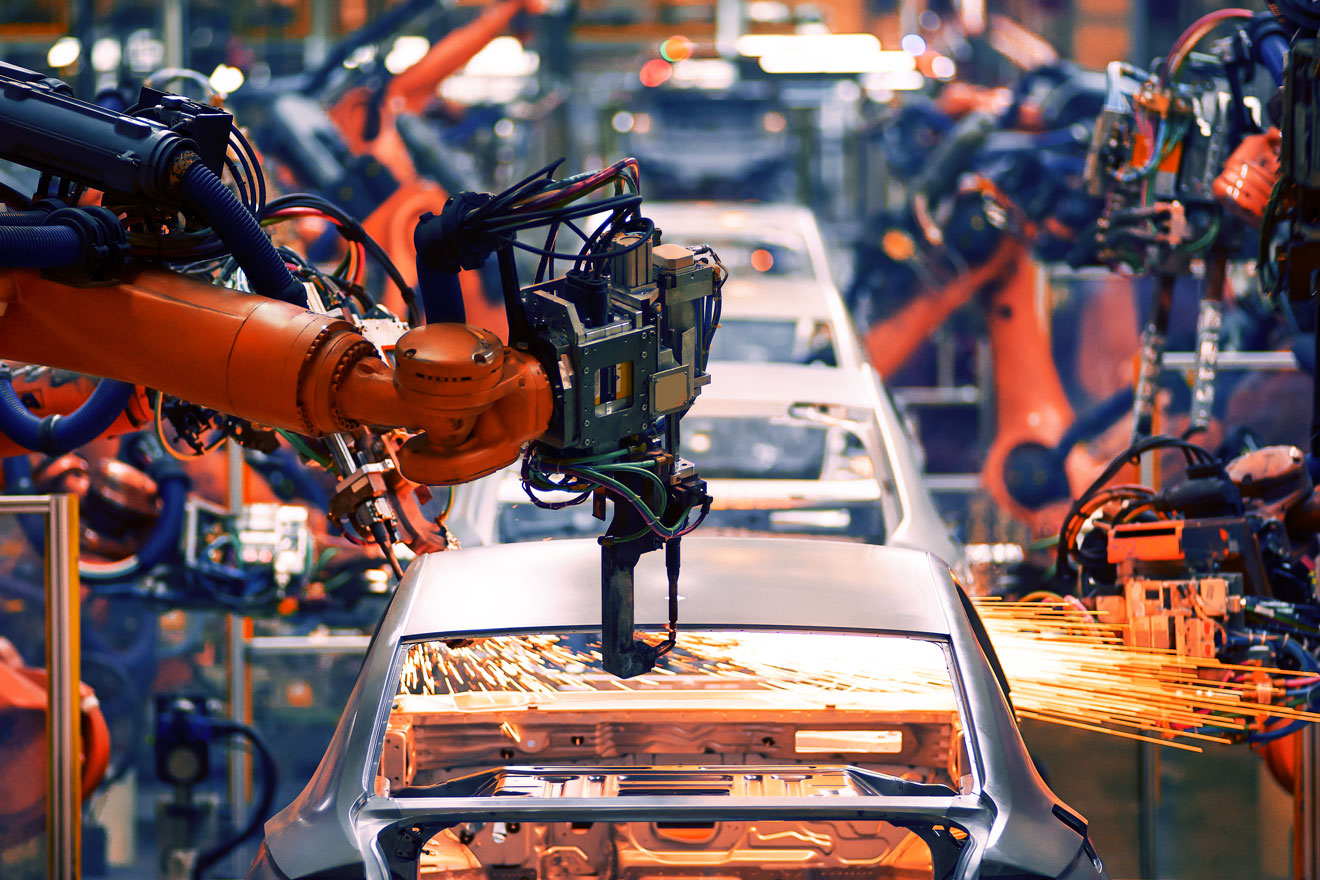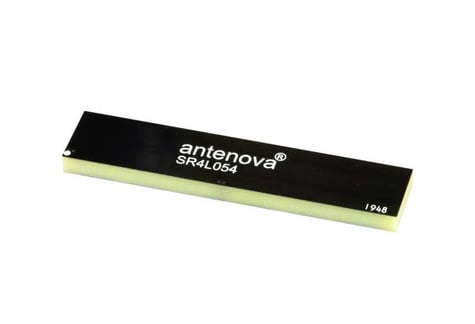Although consumer technology is catching up with the new possibilities opened up by 5G, forward thinkers in commerce and industry have already seen how 5G’s reliable and extremely fast transfer of huge amounts of data across hundreds of devices can revolutionise the world of manufacturing and business, and make what’s already working well work better. In this article we’ll look at some of the new commercial possibilities opened up by 5G, and see how 5G can improve on existing successes.
5G for robotics
As robotic technology becomes increasingly advanced, the next crucial step is creating systems where robots can share information with each other. 5G is particularly suited to making this a reality, as it enables a lower latency and higher bandwidth than other wireless networks can provide. Without lower latencies, robots will take too long to interact with each other to avoid potential errors. Without higher bandwidths, the amount of devices accessible in a robotic system is severely limited by data. Thanks to 5G, any number of robots will be able to navigate environments safely together with the option of complete remote control from anywhere.
With 5G, robots will be able connect to a cloud to reliably and near instantaneously send information about themselves and their surroundings to other robots, devices, and humans connected to the same network. Robots will be able to work together on a wide range of tasks, from transporting hazardous materials to performing medical operations, thereby freeing humans to perform other tasks, without ultimately giving up human control when required.
All activity across the robotic system can be monitored and remotely controlled by humans via the cloud. Without 5G’s unprecedentedly high rates of data transfer and low latency across hundreds of devices, robotic systems would not be possible. Agriculture, healthcare, and manufacturing are all set to benefit from advances in robotic systems supported by 5G technology.
Augmented reality for manufacturing
Beyond robots, the ease with which 5G can transfer large quantities of data across hundreds of devices looks set to impact the ways we troubleshoot during manufacturing. Ericsson are already utilising 5G to bring augmented reality to the factory floor.
At the heart of Ericsson’s 5G approach to the factory are augmented reality headsets. With all the devices operating in a factory connected to a 5G network, data on each component’s performance can be reliably shared with every device on a network in real-time. This data includes historical information, as well as reliable information on currently developing aspects of components across plants and uses. With all this instantly accessible and ready to be processed on a 5G network, augmented reality headsets can be effectively used by workers for troubleshooting.
Visual-recognition software, making full use of the huge quantities of data made instantly accessible by 5G, will give troubleshooting engineers real-time access to:
- Technical information on components they are handling
- Virtual training scenarios
- Up-to-date news about parts
Ericsson have reported time savings of up to 50% by using augmented reality troubleshooting driven by 5G. Time wasted in research and sharing information on a particular problem are minimised by 5G networks, where relevant information is immediately shared in real-time across the entire network, ready to be accessed whenever it is required.
Industry 4.0
Augmented reality is just one way that 5G will support future manufacturing environments. ‘Industry 4.0’ is a term for a vision of 5G-enabled ‘smart’ factories where miniaturized processors, storage units, sensors and transmitters are built into machines, products, materials and smart tools that are all networked to transmit seamlessly and reliably to optimize production. Data is collected, analyzed, and shared from all stages of the manufacturing process to provide key insights and guidance. 5G integrates this seamlessly by providing:
- Reliability: 5G is inherently reliable, with research by Nokia showing just one message lost or delayed in every 100,000 messages.
- Connectivity cost: Wireless networks save on costs of maintenance and installation compared to wired networks. Additionally, devices can be added to a 5G infrastructure with a simple addition of a wireless sensor - unlike the more complicated addition of wired components to a network. As a result, scaling is much more cost effective for 5G networks compared with wired networks.
- Ultra-low latency: 5G is the only wireless option than can provide a latency of 1ms. This level of instantaneous response is essential for Industry 4.0.
Previous wireless technologies (including bluetooth, WLAN, and 4G) couldn’t provide the necessary low latency required for Industry 4.0 applications. As a result, wired networks based around Industrial Ethernet and Fieldbus protocols seemed to be the only way of networking most devices in a factory. The need for physical wires placed severe limits on the feasibility of Internet 4.0 in any factory environment with lots of components and moving parts. With 5G, all sorts of devices can be easily incorporated into the Internet 4.0 environment, increasing the reliability and range of insights available.
Industry 4.0 at work
Working with Bosch, Texmo Industries, a major producer of agricultural components, have made use of Industry 4.0 to connect their manufacturing process with consumer insights. With production spread across five plants, it was essential that Texmo could forecast demand with accuracy, ensuring their products were ultimately available at the right places at the right times. By connecting key departments, suppliers, and the factory floor through a combination of wired and wireless Industry 4.0 networks, Texmo were able to automate production and make key business decisions based on real-time developments in raw materials, parts availability, and consumer needs in a way that could be well-regulated if necessary.
5G allows this kind of operation to develop with a greater level of insight and reliability, an increasing sense of scale, and a lower cost of maintenance. Easily installed 5G sensors across the organisation would provide more extensive data on every aspect of operations. The homogeneity of a 5G network, with no divides across wired and wireless aspects of the network, creates an analytical system where insights are more reliable, readily scalable, and easier for manufacturers to regulate from anywhere.
Conclusions
5G offers whole new ways of operating, allowing businesses to hone what they are already successfully doing. The world of robotic systems opened up by 5G presents exciting opportunities to free up human labour time, as well as to change the way work is done around a factory. By driving Industry 4.0 forward, 5G networks will provide even more extensive real-time insights into the needs of consumers and how products can be more efficiently manufactured to meet them. Easily scalable communication networks of hundreds of devices have been made possible by 5G, allowing smart factories capable of observing their own operations to guarantee efficiency and adapt to emergent problems in real-time.
Still, it’s important to recognise that while 5G has great potential, the high price associated with installing the technology means that there is a balance to be struck between its costs and its returns. Current wireless technologies already offer exceptional levels of service, perfectly adequate in many situations, and it is expected that they will continue to evolve, offering improved capacities. So the decision to adopt 5G will not necessarily be clear cut in every situation: for specialist advice from experienced wireless engineers, please contact the Antenova support team.




